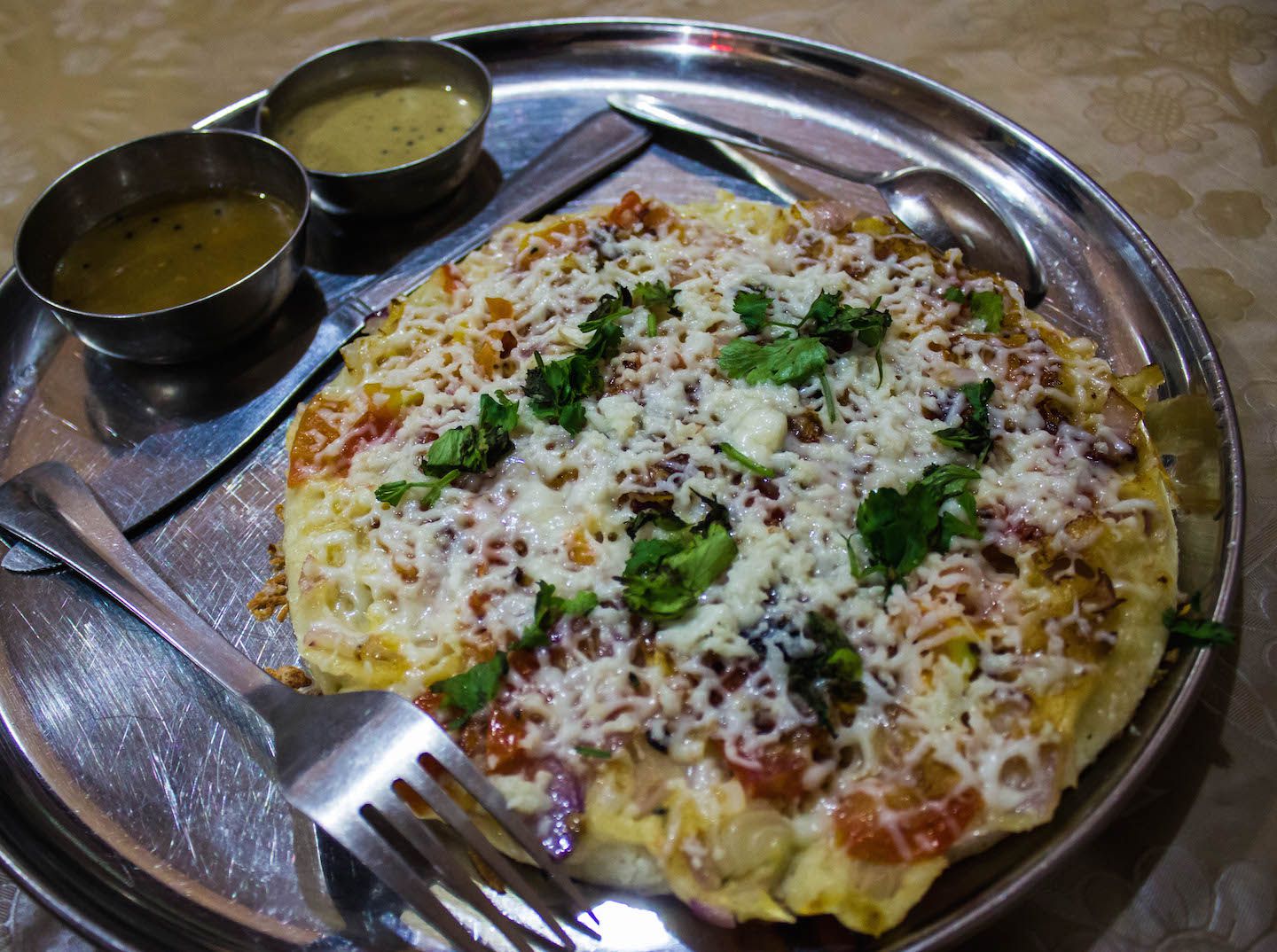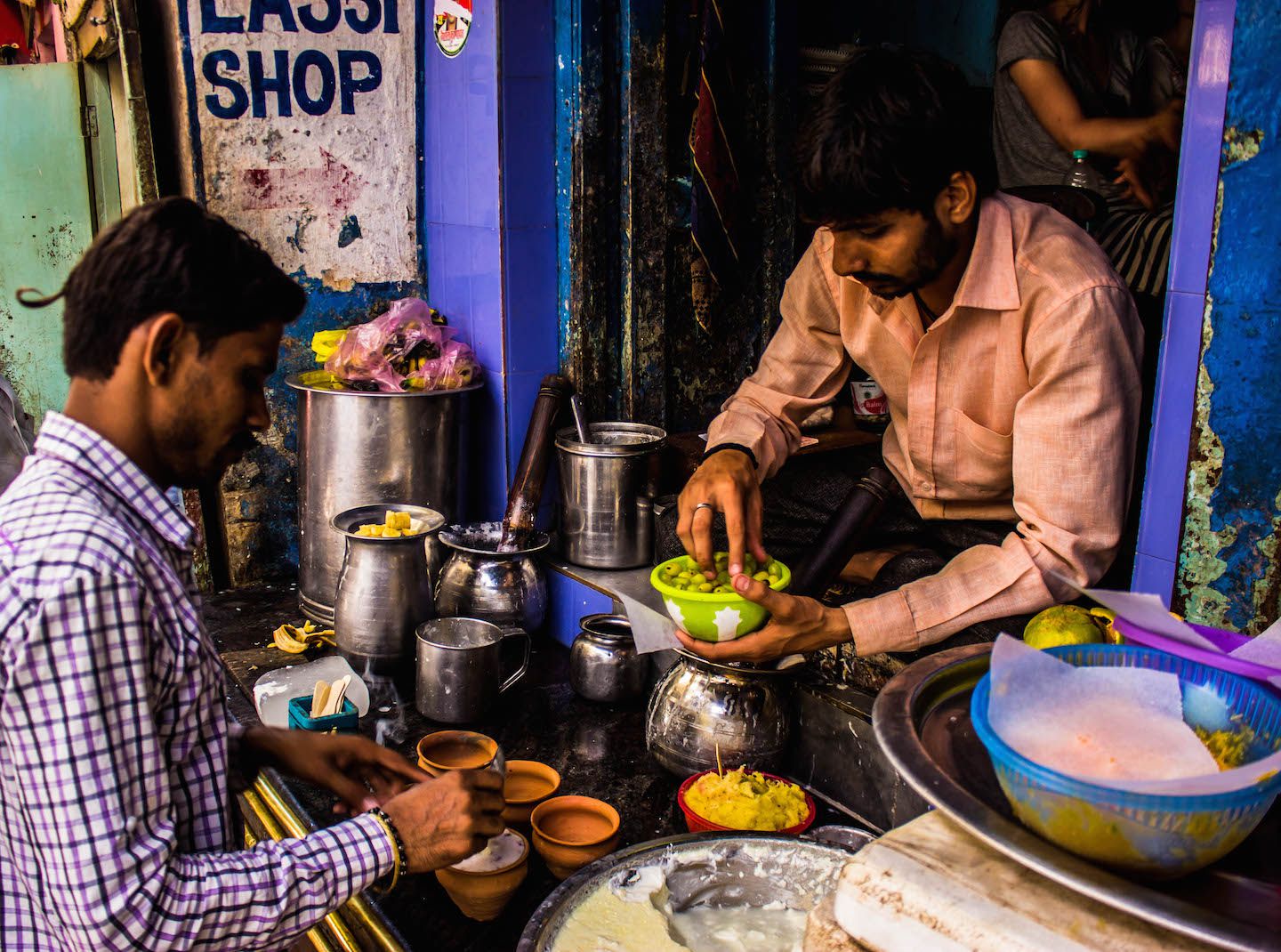First, I want to point out that Indian food cannot be adequately described in one blog post without it being a gross generalization. It would be the equivalent of summarizing everything that is Chinese food in a few paragraphs. There are single dishes that are by themselves complex enough to warrant a dedicated article. All the variety in ingredients and cooking styles rooted in thousands of years of history simply cannot be properly summed up in a few pages.

I also have little to no expertise on Indian food. No lies, the first few times a menu was handed to me, I had no idea what half of the dishes meant and had to google them to get an idea. More than the first few times, I would forget what I had looked up before only to look them up again. It took some time, but we slowly got used to the dishes, to eating with our hands. Here was our best attempt at trying new foods in India, highly summarized.
Indian Breads
So far in most places we’ve traveled to in Asia, rice and noodles have been a staple in most dishes. While we also had plenty of rice and noodles in India, we found ourselves eating more bread items, Indian style. All of them were flatbreads of some sort, eaten as a staple with other main dishes. In the beginning, we ordered naan – oven-baked, leavened flatbread – as our bread of choice, until we learned that it’s heavier and harder to digest. Only meant to be eaten once a day. Oops.

After that, we learned to order chapatis or rotis – unleavened flatbread – instead, meant to be eaten on a daily basis. I’m quite proud to say that I mastered the art of ripping off small pieces of chapati using only one hand. For variety, we occasionally ordered parathas. It’s very similar to chapatis, but layered. Thus parathas can also be stuffed with a vegetable or paneer filling.
Main Dishes
There were obviously too many main dishes to describe individually, but they generally fell into two categories: veg. or non-veg.

Vegetarian items were the most prevalent, mostly due to religious reasons (plus meat options were also more expensive). Being the meateaters that we are, it definitely took some adjusting. Veg items usually contained paneer cheese, potatoes, or other vegetables (generally stronger ones that wouldn’t turn to mush, like cauliflower, beans, carrots, etc.). We tended to lean towards the paneer dishes, and by the end of India, we loved a good paneer butter masala.

Most veg. items tended to be vegetables cut into pieces and cooked for hours in a thick sauce or gravy (especially northern India). Palak dishes have a pureed spinach sauce, while korma dishes have a spiced yogurt sauce. Kadai dishes have a tomato and onion based gravy, just to name a few examples. When we didn’t want a whole bowl of one kind of curry, we opted for a thali. Like an Indian dal bhat, thalis had a little bit of everything, and varied between cooks. A Rajasthani thali was one of the local thali specialties we tried.

Non-veg. items were a treat when we could get them, Cows are sacred, so no beef, but chicken and mutton were popular options. Laal maans was my favourite, a mutton curry in a curd sauce with chilis. Chicken tikka or chicken kebabs were always good options, too, especially if we wanted meat without sauce. I have to admit I was surprised that at times, I almost preferred veg options. Sometimes it’s just too hot and heavy to eat meat.

South Indian Food
For such a large and diverse country, it’s no surprise that food in India varied as drastically as the geography, depending on the region. Even though we were only in south India for a few days, we tried some typical dishes, including idlis, dosas, and uttapams. Traditionally eaten for breakfast, idlis were small savory cakes made out of steamed lentils and rice batter. The dull batter taste didn’t appeal to me and they were my least favorite of all three.

A staple food in south India, dosas were crepe-like dishes served with vegetarian stuffings, such as tomatoes and onions, and a variety of chutneys. The crispy crust of the batter added texture. Uttapams, unlike dosas, have a thick pancake-like batter, also with toppings. It’s often regarded as the “Indian pizza.” While it did not taste like a regular pizza, we did find uttapams to be filling.

Drinks
When I think of Indian drinks, I think masala tea, or chai tea. Black tea with spices, it was a mystery in the beginning how locals could drink this hot beverages on an already hot day. I disliked masala tea a lot as a kid, but it has grown on me over the years. Besides bottled water, we could always count on masala tea to be available, cheap, and safe to drink. I would even venture to say that I grew fond of masala tea by the end of India.

My favourite drink in India were definitely lassis. I always thought of it as a simple yogurt drink – which it was a lot of the time – but we had some truly fancy lassis in India. Every cafe and restaurant offered plain or sweet lassis, but it was the specialty lassi stores that served the best ones. One such popular spot made the lassis in little clay pots in front of our eyes. Sweet lassis were often coupled with your fruits of choice. The yogurt itself was infused with mushed fruit pieces, and then beautifully garnished with a mix of colourful fruits. They were as delightfully tasty as they were pretty.

Despite a month in India trying local food, I still feel like an amateur just learning the ropes. All the food and the flavours have been very different from everything I’ve known. It has been interesting to try out what we could, despite the sheer number of things to try. Indian food remains mostly a mystery that I am still slowly deciphering.
